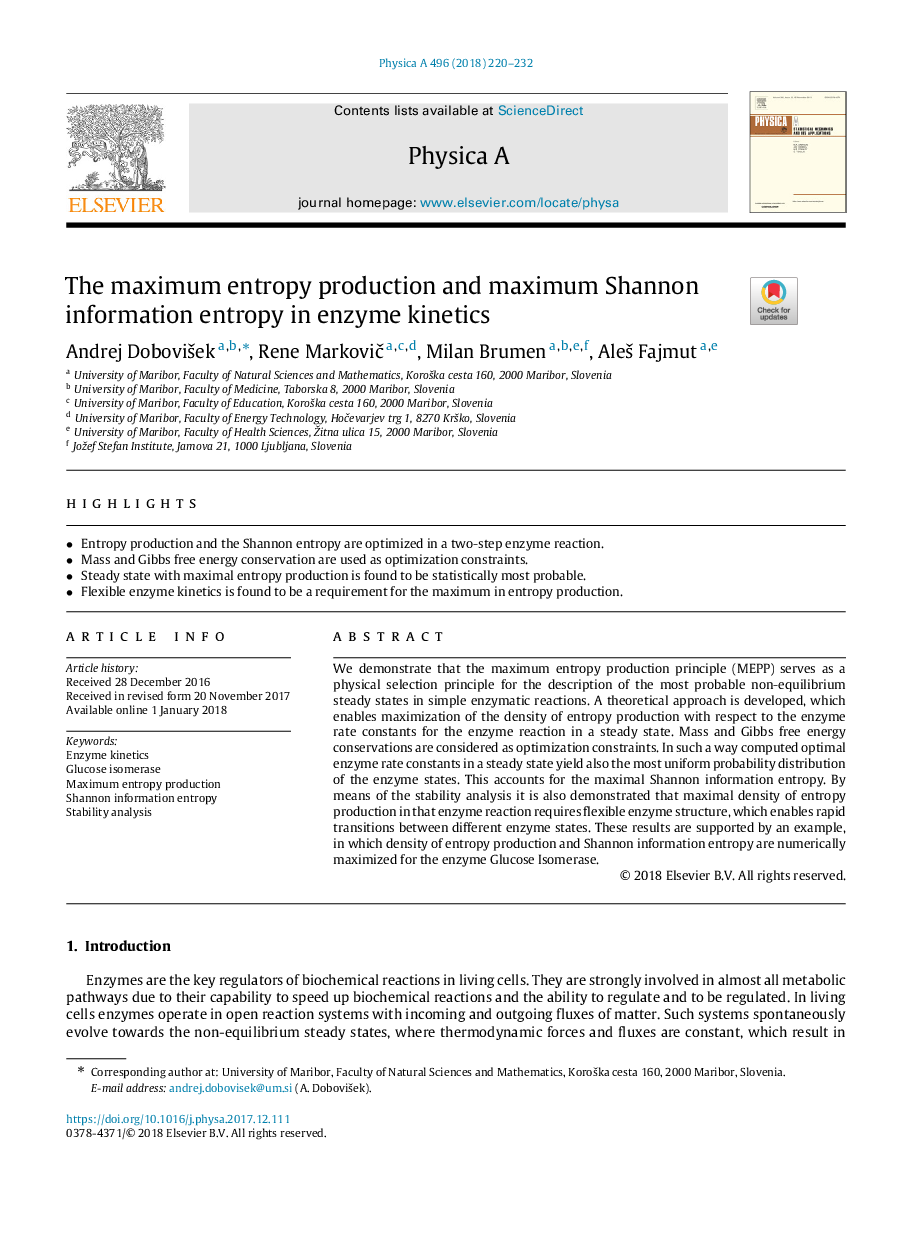| Article ID | Journal | Published Year | Pages | File Type |
|---|---|---|---|---|
| 7375956 | Physica A: Statistical Mechanics and its Applications | 2018 | 13 Pages |
Abstract
We demonstrate that the maximum entropy production principle (MEPP) serves as a physical selection principle for the description of the most probable non-equilibrium steady states in simple enzymatic reactions. A theoretical approach is developed, which enables maximization of the density of entropy production with respect to the enzyme rate constants for the enzyme reaction in a steady state. Mass and Gibbs free energy conservations are considered as optimization constraints. In such a way computed optimal enzyme rate constants in a steady state yield also the most uniform probability distribution of the enzyme states. This accounts for the maximal Shannon information entropy. By means of the stability analysis it is also demonstrated that maximal density of entropy production in that enzyme reaction requires flexible enzyme structure, which enables rapid transitions between different enzyme states. These results are supported by an example, in which density of entropy production and Shannon information entropy are numerically maximized for the enzyme Glucose Isomerase.
Keywords
Related Topics
Physical Sciences and Engineering
Mathematics
Mathematical Physics
Authors
Andrej DoboviÅ¡ek, Rene MarkoviÄ, Milan Brumen, AleÅ¡ Fajmut,
